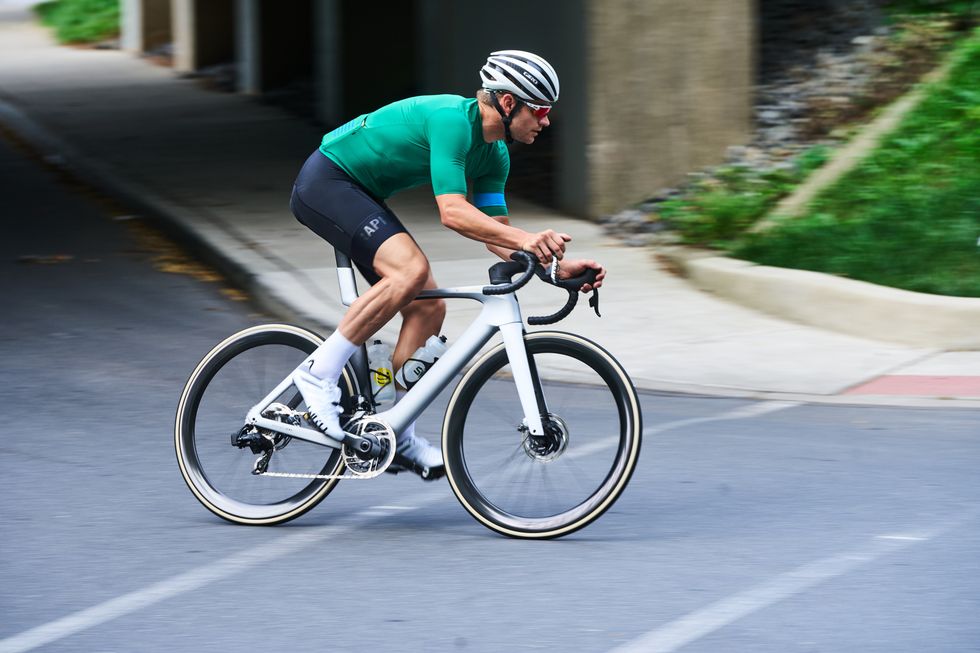Back pain while riding a bike can be a common issue that affects many riders, but it doesn’t have to be inevitable. In this guide, we’ll explore the causes of back pain related to bike riding and provide practical tips on how to avoid and alleviate it. Whether you’re a seasoned cyclist or a beginner, understanding proper bike posture and taking preventive measures can make your rides more enjoyable and pain-free.
Understanding Back Pain and Bike Riding:
Bike riding is a fantastic way to stay active and enjoy the outdoors, but it can also put a strain on your back if not done correctly. The repetitive motion of pedalling, coupled with poor posture, can lead to muscle tension and discomfort in the back and neck.
Causes of Back Pain While Riding a Bike:
Several factors contribute to back pain while riding a bike, including:
Poor posture: Slouching or leaning too far forward can strain the muscles in your back and neck.
Incorrect bike fit: A bike that is not adjusted to your body’s proportions can lead to discomfort and pain.
Weak core muscles: Inadequate core strength can make maintaining proper posture and supporting your spine while riding challenging.
Prolonged riding: Spending long hours on the bike without breaks can exacerbate muscle fatigue and discomfort.
How to Avoid Back Pain While Riding a Bike:
Here are some practical tips to help you prevent back pain while riding:
Maintain proper bike posture: Keep your back straight, shoulders relaxed, and elbows slightly bent while riding. Avoid leaning too far forward or arching your back excessively.
Adjust your bike fit: Ensure that your bike is properly adjusted to your body size and riding style. This includes setting the saddle height, handlebar position, and reach to minimize strain on your back.
Strengthen your core muscles: Incorporate core-strengthening exercises into your fitness routine to improve stability and support for your spine. Focus on exercises such as planks, bridges, and bicycle crunches.
Take regular breaks: Schedule short breaks during long rides to stretch and relax your back muscles. Perform simple stretches such as reaching for your toes or rotating your torso to relieve tension.
Use ergonomic accessories: Invest in padded bike shorts, handlebar grips, or a gel saddle to provide extra cushioning and support for your back.
Stay hydrated and fuelled: Proper hydration and nutrition are essential for maintaining muscle function and preventing fatigue, which can contribute to back pain. Drink plenty of water and consume energy-rich snacks during longer rides.
How to Sit on a Bike to Avoid Back Pain
Proper bike posture starts with how you sit on the bike saddle. Follow these steps to ensure a comfortable and pain-free ride:
Start by adjusting the saddle height so that your feet can touch the ground with a slight bend in the knees when seated.
Sit squarely on the saddle, with your weight evenly distributed between your sit bones.
Keep your back straight and shoulders relaxed, avoiding slouching or leaning too far forward.
Bend your elbows slightly and maintain a light grip on the handlebars, allowing for easy steering and control.
Engage your core muscles to stabilize your spine and pelvis while riding.
Experiment with different saddle positions and angles to find the most comfortable setup for your body.
Now that you know the right position to ride the bike you must also be aware that you need to have a bike insurance policy along with the driving licence.
Having bike insurance is crucial for several reasons:
Legal Requirement: In many countries, having bike insurance is mandatory by law. Riding a bike without insurance can result in fines, penalties, or even legal consequences. It provides financial protection in case of accidents, ensuring compliance with legal requirements.
Financial Protection: Bike insurance offers financial coverage against damages to your bike due to accidents, theft, natural disasters, or vandalism. It also provides liability coverage for damages or injuries caused to third parties, including property damage and medical expenses.
Personal Safety: Insurance policies often include personal accident cover, which provides compensation in case of injuries or fatalities resulting from bike accidents. This coverage helps meet medical expenses and rehabilitation costs or provides financial support to the family in case of unfortunate events.
Peace of Mind: Having bike insurance offers peace of mind, knowing that you are financially protected against unforeseen circumstances. Whether it’s minor damages or major accidents, insurance provides a safety net, reducing stress and worries associated with bike ownership.
Coverage Flexibility: Bike insurance policies come with various coverage options and add-on benefits that can be customised according to your needs and budget. You can choose comprehensive coverage for extensive protection or opt for third-party liability insurance for basic legal compliance.
Financial Stability: In case of accidents involving third parties, bike insurance helps cover legal expenses and compensation payments. Without insurance, you may be liable to pay hefty sums out of pocket, which can lead to financial strain or bankruptcy [6].
Conclusion:
By following these tips and adopting good bike riding habits, you can significantly reduce the risk of experiencing back pain while cycling. Remember to listen to your body and make adjustments as needed to ensure a comfortable and enjoyable ride every time. Incorporating regular stretching and strengthening exercises into your routine can also help improve your overall fitness and resilience to back pain. With the right approach and proper bike setup, you can ride with confidence and minimize the risk of discomfort and injury.


